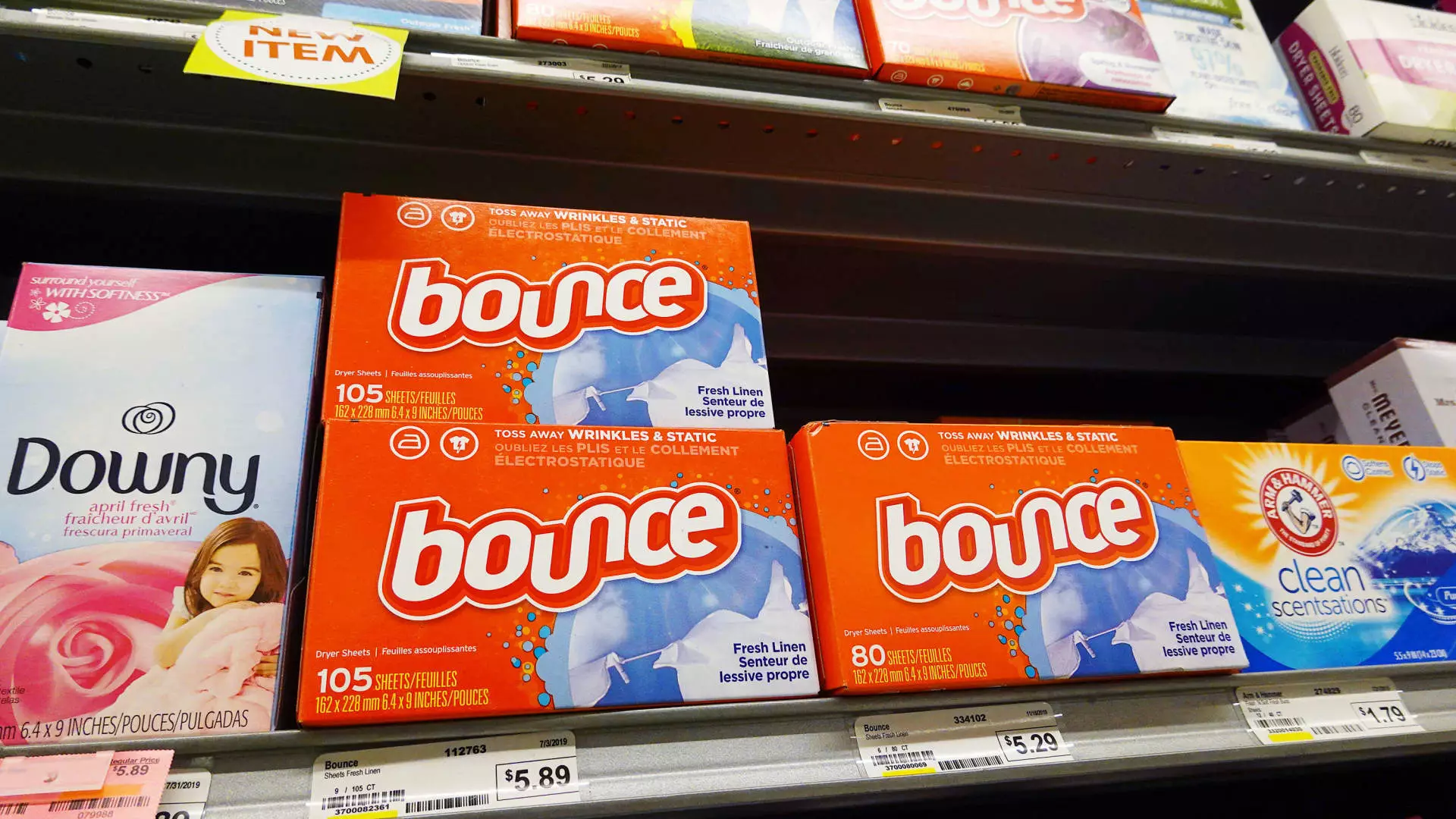Procter & Gamble (P&G), a leading name in consumer goods, recently released its fiscal first-quarter earnings, but the results fell short of market expectations. While P&G managed to beat analysts’ forecasts on earnings per share, a deeper analysis reveals concerning trends in revenue and market demand, particularly in key areas like Greater China. Investors reacted to the news with caution, reflected in a slight decline of 1% in share value during premarket trading following the announcement.
P&G reported adjusted earnings per share of $1.93, slightly exceeding Wall Street’s expectations of $1.90. However, total revenue came in at $21.74 billion, lower than the anticipated $21.91 billion. More alarming is the year-over-year comparison in net income, which decreased from $4.52 billion or $1.83 per share to approximately $3.96 billion or $1.61 per share for the quarter. This decline raises questions about the company’s operational efficiency and its ability to sustain profitability amidst rising production costs and fluctuating demand.
The company’s net sales experienced a modest decline of 1%, landing at $21.71 billion. Despite these figures, P&G reported a 2% increase in organic revenue, largely driven by strategic price increases. Yet, the company’s bulk sales volume remained flat, indicating a concerning stagnation in actual consumer demand—an essential metric for understanding the real market health and P&G’s competitive positioning.
P&G’s challenges are not equally distributed across its various product lines. While the overall volume might appear stable in the U.S.—where P&G achieved growth in eight out of ten categories—it is a different narrative in Greater China. This region has become increasingly problematic, with the company reporting volume declines in both hair care and oral care segments. CFO Andre Schulten highlighted the potential for a protracted recovery, predicting that it could take several quarters for demand to rebound, despite optimism surrounding government initiatives aimed at stimulating the economy.
A significant portion of P&G’s beauty division, which includes flagship brands like Pantene and Olay, recorded a 2% fall in volume. More prominently, the skin care category experienced an alarming organic sales decline of over 20%. Such drastic drops can be attributed to a shift in consumer preferences and intensified competition, compounded by the lingering impacts of pandemic-induced economic strain. Notably, the SK-II brand, known for its high price point, particularly struggled to regain traction in a post-lockdown market.
While certain sectors faltered, others within P&G’s portfolio demonstrated resilience. The grooming division, encompassing Gillette and Venus, displayed commendable performance with a 4% growth in volume, credited primarily to innovative product launches and marketing strategies. Such agility is essential in a fast-evolving consumer landscape, particularly as preferences shift towards environmentally friendly and sustainable products.
P&G’s fabric and home care sector, featuring popular labels like Tide and Febreze, also noted a 1% volume increase, hinting at ongoing consumer interest in household necessities. However, areas such as the health care and baby care divisions exhibited volume declines of 1%, adding pressure to P&G’s overall growth narrative. These mixed results highlight not only the competitive landscape but also the difficulty in maintaining momentum across diversified product portfolios.
Despite the challenges underscored in the latest report, P&G has reiterated its fiscal 2025 forecast, projecting core net earnings per share between $6.91 to $7.05, alongside anticipated revenue growth of 2% to 4%. This outlook suggests a cautious optimism that may rely heavily on successful navigation of geopolitical and economic uncertainties, particularly in crucial markets like China.
As the company seeks to enhance its competitive edge, it will need to focus on innovation, efficiency, and adaptation to changing consumer preferences. Engaging more deeply with its customer base and exploring avenues for product diversification will be critical in reclaiming growth and driving shareholder confidence in the coming quarters.
Procter & Gamble’s recent quarterly results reveal a complex landscape of challenges and opportunities, necessitating strategic planning and execution to foster sustained growth in an increasingly competitive market.

